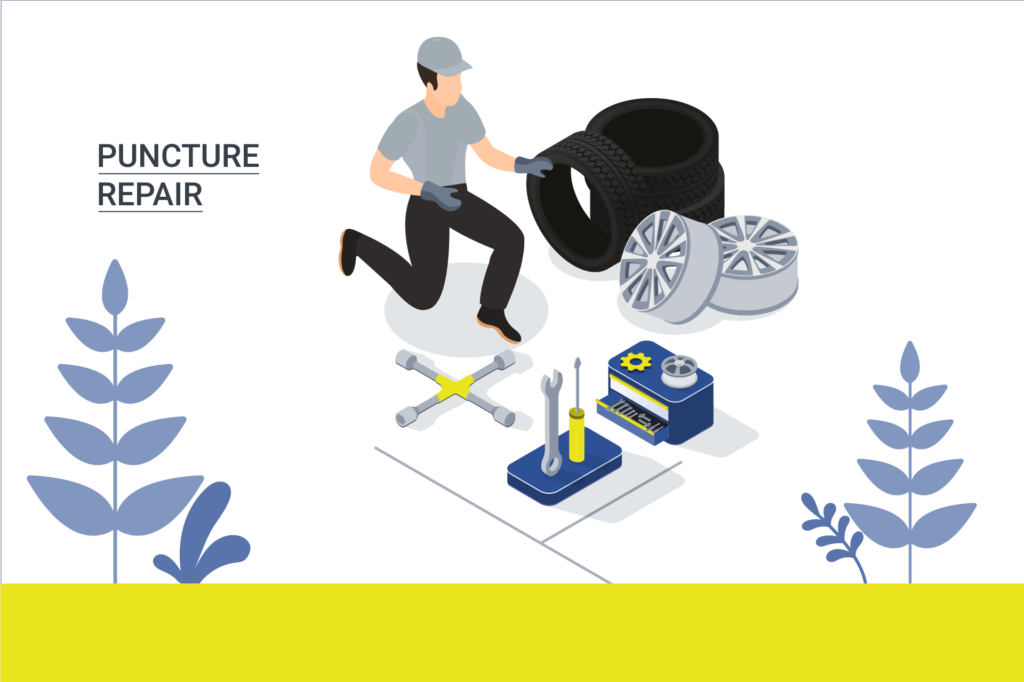
puncture repair
Puncture repair is an essential maintenance task for vehicles to ensure that tires remain functional and safe to drive on. A puncture can occur due to sharp objects on the road, such as nails, glass, or debris, and addressing it promptly helps prevent further damage and ensures the vehicle remains roadworthy. Here’s a detailed guide on puncture repair:
Types of Punctures
- Tire Tread Puncture: Occurs in the part of the tire that makes contact with the road. These are generally easier to repair.
- Sidewall Puncture: Happens in the sidewall of the tire. These are more difficult to repair and may require tire replacement due to structural integrity concerns.
- Valve Stem Issues: The valve stem, where the air is pumped into the tire, can also develop leaks, which can be repaired or replaced.
Puncture Repair Process
Safety First:
- Ensure the vehicle is parked on a flat, stable surface.
- Engage the parking brake and use wheel chocks to prevent rolling.
Locate the Puncture:
- Visual Inspection: Check the tire for obvious signs of damage, such as nails or cuts.
- Soapy Water Test: Apply soapy water to the tire surface. Bubbles will form at the puncture site if there is a leak.
Remove the Tire:
- If necessary, remove the wheel from the vehicle. This step involves loosening the lug nuts and lifting the vehicle with a jack.
Inspect and Prepare the Puncture:
- Remove Debris: If there is a foreign object in the tire, carefully remove it.
- Mark the Puncture: Identify and mark the area to ensure it is properly repaired.
Repair the Puncture:
- Tire Plugging: For minor tread punctures, a tire plug can be used. This involves inserting a rubber plug into the puncture hole and sealing it with adhesive.
- Tire Patching: A more robust repair involves removing the tire from the rim, applying a rubber patch to the inside of the tire, and sealing it. This method is often used for larger punctures or when the tire is removed for inspection.
- Sealant: Some technicians use tire sealant products that can temporarily seal small punctures from the inside. This is often a temporary fix and may require a more permanent repair later.
Reinstall the Tire:
- If the tire was removed, reinstall it on the wheel hub, ensuring that lug nuts are tightened to the manufacturer’s specifications.
Check and Adjust Tire Pressure:
- Inflate the tire to the recommended pressure using a tire gauge. Ensure it’s within the vehicle manufacturer’s specifications.
Rebalance the Tire (if necessary):
- After a puncture repair, it might be necessary to rebalance the tire to ensure smooth driving.
